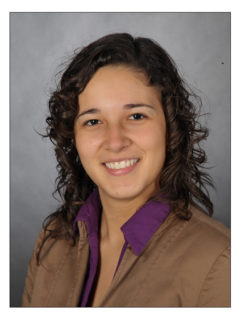Angela-Maria Arias-Jaramillo
Angela-Maria Arias-Jaramillo
Master Studentin
Development of Hydrogel Composite Materials for 3D-Plotted structures for bone regeneration
Betreuer: Vera Bednarzig, Prof. Dr.-Ing. habil. Aldo R. Boccaccini
3D-Plotting has become a powerful tool for the manufacturing of adapted implant structures. It allows to produce 3D structures that closely mimic the real conditions. 3D plotting, combined with the resemblance of hydrogels to the extracellular matrix, offers an adequate environment for cell culturing and/or cell encapsulation. Alginate is a typical hydrogel with advantages such ease of extraction, and non-toxicity properties. Nevertheless, due to its low mechanical properties, specially stiffness, alginate is being barely applied in hard tissue engineering. For this reason, composites of alginate and inorganic particles are acquiring importance, since the addition of inorganic particles can enhance the mechanical properties of the hydrogels and the combination of both can allow a better cell attachment and, in special cases, ion release [1]. Hence, the goal of this project is the production of alginate and alginate composite based scaffolds via 3D-Plotting to determine the most adequate mixture ratio and printing set-up, which allows, among others, a high cell interaction, if desired, and posterior bone regeneration. References
[1] Utech, S.; Boccaccini, A. R. A review of hydrogel-based composites for biomedical applications: Enhancement of hydrogel properties by addition of rigid inorganic fillers. J. Mater. Sci. 2016, 51, 271–310.

